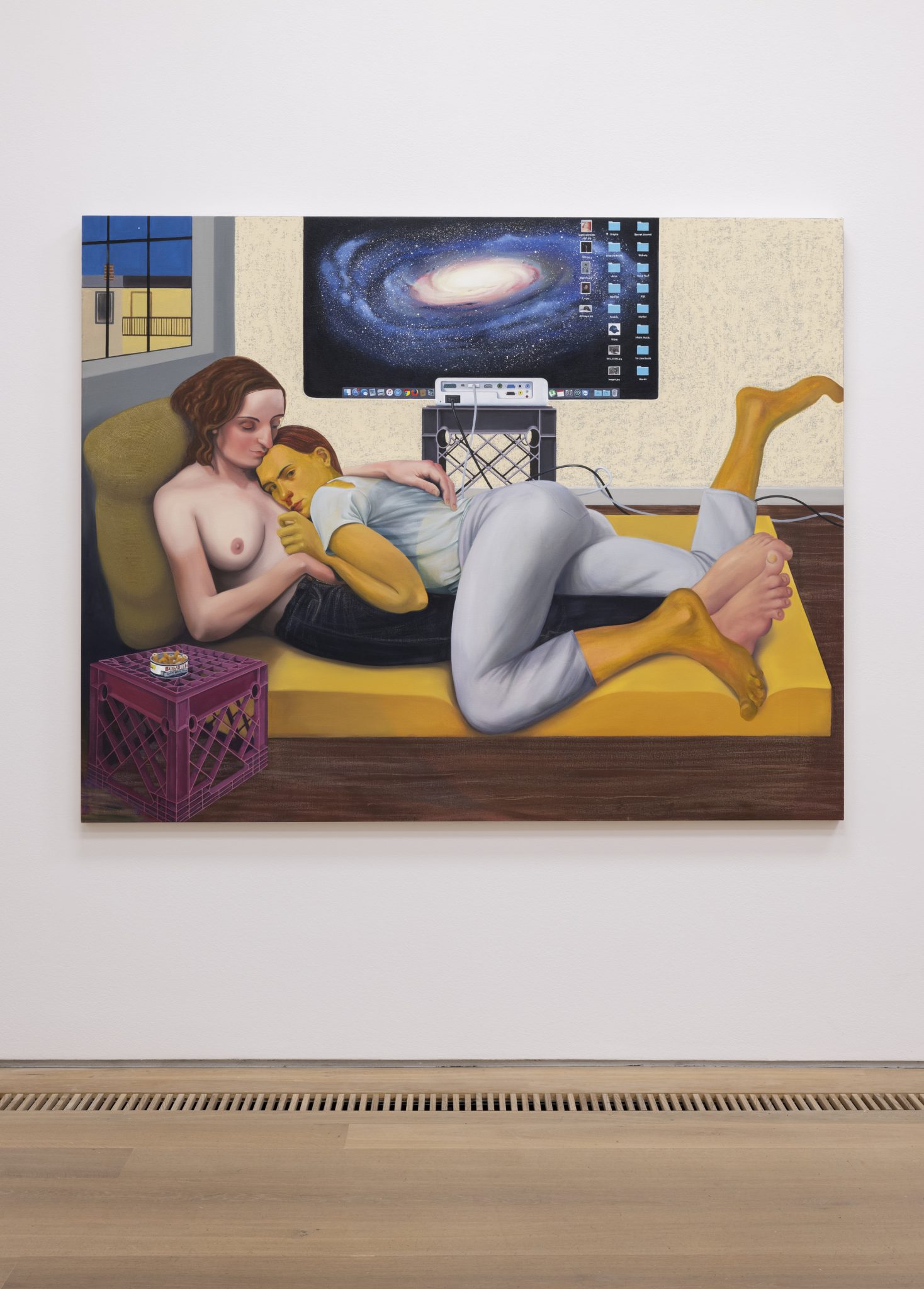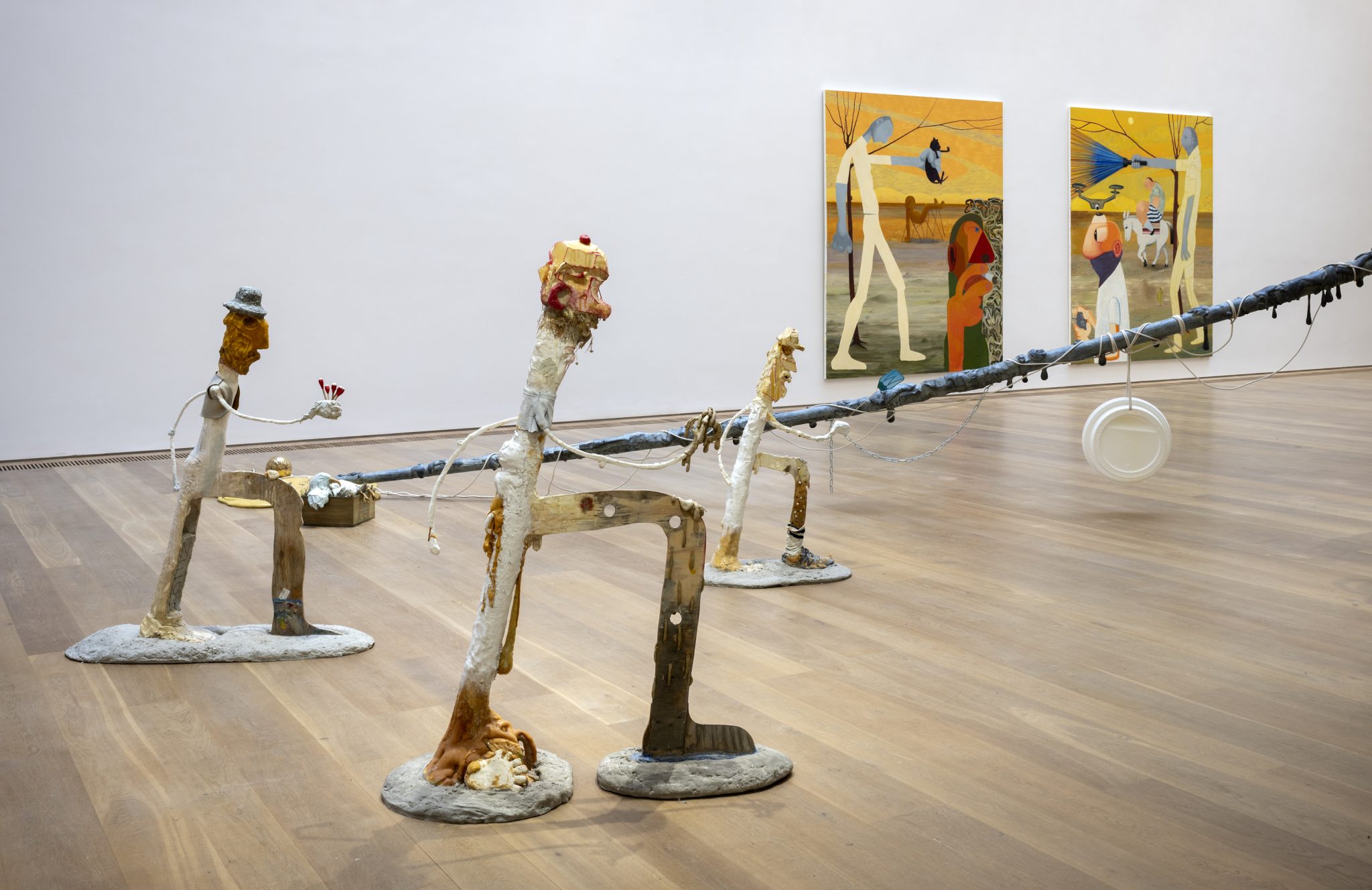

You are currently viewing a placeholder content from Default. To access the actual content, click the button below. Please note that doing so will share data with third-party providers.
More Information
“Nicole Eisenman. What Happened” at Museum Brandhorst surveys for the first time the entire spectrum of the artist’s three decades of work in painting and sculpture, bringing together approximately 100 works dating from 1992 to the present. Relevant from an art historical and social, political and deeply human perspective, it is an oeuvre that manages in an anarchic way to be both an homage to and a critique of its own subject.
Nicole Eisenman (*1965) has been one of the protagonists of the New York art scene since the 1990s and is today one of the most influential contemporary artists. From the beginning, her work has been characterized by a juxtaposition of different materials, formats and techniques, from paintings and works on paper to large-scale murals and installations. Characteristically, Eisenman draws from a variety of sources, including works from the Renaissance, underground comics, and socialist murals of the 1930s to name but a few. Many of her works invoke the experiences of lesbian communities in New York. However, rather than being documentary, they are highly imaginative and comical.
In her large-scale figurative paintings since the 2000s, Eisenman references her living environment, depicting the everyday in ways that are both humorous and compassionate. They are often group portraits, yet they tell not only of unity and connectedness, but also of loneliness and alienation within society. Since the mid-2010s, the artist has produced a series of monumental paintings in which she references the tense political atmosphere in the United States following the 2016 presidential election. Some works criticize those voters who fell for Donald Trump’s populist promises. Others feature politically engaged communities working together to confront a social culture that is on a dark path (“The Darkward Trail,” 2018). In recent years, sculptural works have also become more prominent in Eisenman’s practice. After initially working with plaster at the beginning of the 2010s, these days there is no material that the artist does not use in her sculptures. Their materiality references queer themes that continually preoccupy Eisenman, along with her unwavering humanist and universalist stance.
Visitors to the exhibition “Nicole Eisenman. What Happened” will be immersed in three interwoven narrative threads as they explore the show. The first is about a lesbian artist with feminist convictions who begins painting for a small alternative community in New York’s downtown scene of the 1990s and whose works are now celebrated internationally. Another narrative is devoted to Eisenman’s view of and commentary on U.S. society and the cracks that run through it: the impact of George W. Bush’s presidency, the 2008 economic crisis, or the shift to the right in politics following Trump’s election. Likewise, Eisenman negotiates the omnipresence of screens in our everyday lives, imagines the U.S. landscape at the onset of climate catastrophe, and infuses the genre of history painting with new life by capturing recent protest movements such as Black Lives Matter and Defund the Police in her images. Finally, in a third narrative strand, the exhibition displays the impressive formal aesthetic experiments, ambition, and ingenuity in the selection of material that distinguish the artist’s oeuvre.
Accompanying the exhibition is a comprehensive catalog documenting the full range of Eisenman’s work. In his essay entitled “What Happened,” Mark Godfrey provides a comprehensive genesis of the work. In her text, Monika Bayer-Wermuth explores the question of fluidity of material and bodies alike. In addition to the essays by the two curators, Chloe Wyma devotes herself to Eisenman’s most recent works and her role within political discourses in the art world in recent years. Reminiscences and short contributions by numerous contemporaries complete the book, which provides an insight into the artist’s work that is as profound as it is personal.
An exhibition by Museum Brandhorst in cooperation with the Whitechapel Gallery in London
Curated by Monika Bayer-Wermuth and Mark Godfrey
Installation view „Nicole Eisenman. What Happened“ at Museum Brandhorst, 24 March – 10 September 2023© Nicole Eisenman. Photo: Haydar Koyupinar, Bayerische Staatsgemäldesammlungen, Museum Brandhorst, Munich









